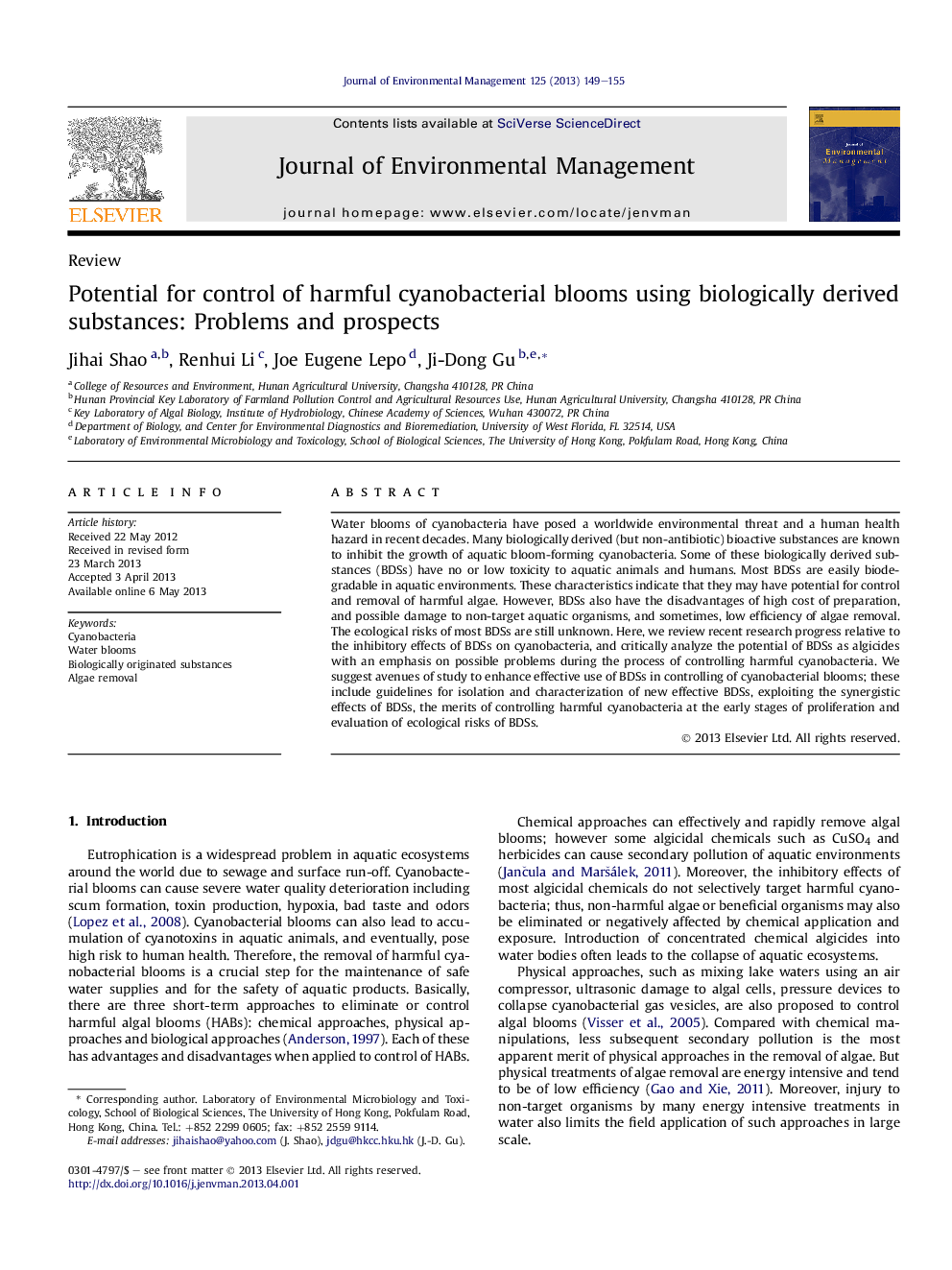| Article ID | Journal | Published Year | Pages | File Type |
|---|---|---|---|---|
| 1055896 | Journal of Environmental Management | 2013 | 7 Pages |
•Inhibitory characteristics and inhibitory mechanisms of BDSs on cyanobacteria were critically analyzed.•The possible problems using BDSs for cyanobacterial control were critically analyzed.•Guidelines for further study and application of BDSs in cyanobacterial control are proposed.
Water blooms of cyanobacteria have posed a worldwide environmental threat and a human health hazard in recent decades. Many biologically derived (but non-antibiotic) bioactive substances are known to inhibit the growth of aquatic bloom-forming cyanobacteria. Some of these biologically derived substances (BDSs) have no or low toxicity to aquatic animals and humans. Most BDSs are easily biodegradable in aquatic environments. These characteristics indicate that they may have potential for control and removal of harmful algae. However, BDSs also have the disadvantages of high cost of preparation, and possible damage to non-target aquatic organisms, and sometimes, low efficiency of algae removal. The ecological risks of most BDSs are still unknown. Here, we review recent research progress relative to the inhibitory effects of BDSs on cyanobacteria, and critically analyze the potential of BDSs as algicides with an emphasis on possible problems during the process of controlling harmful cyanobacteria. We suggest avenues of study to enhance effective use of BDSs in controlling of cyanobacterial blooms; these include guidelines for isolation and characterization of new effective BDSs, exploiting the synergistic effects of BDSs, the merits of controlling harmful cyanobacteria at the early stages of proliferation and evaluation of ecological risks of BDSs.
